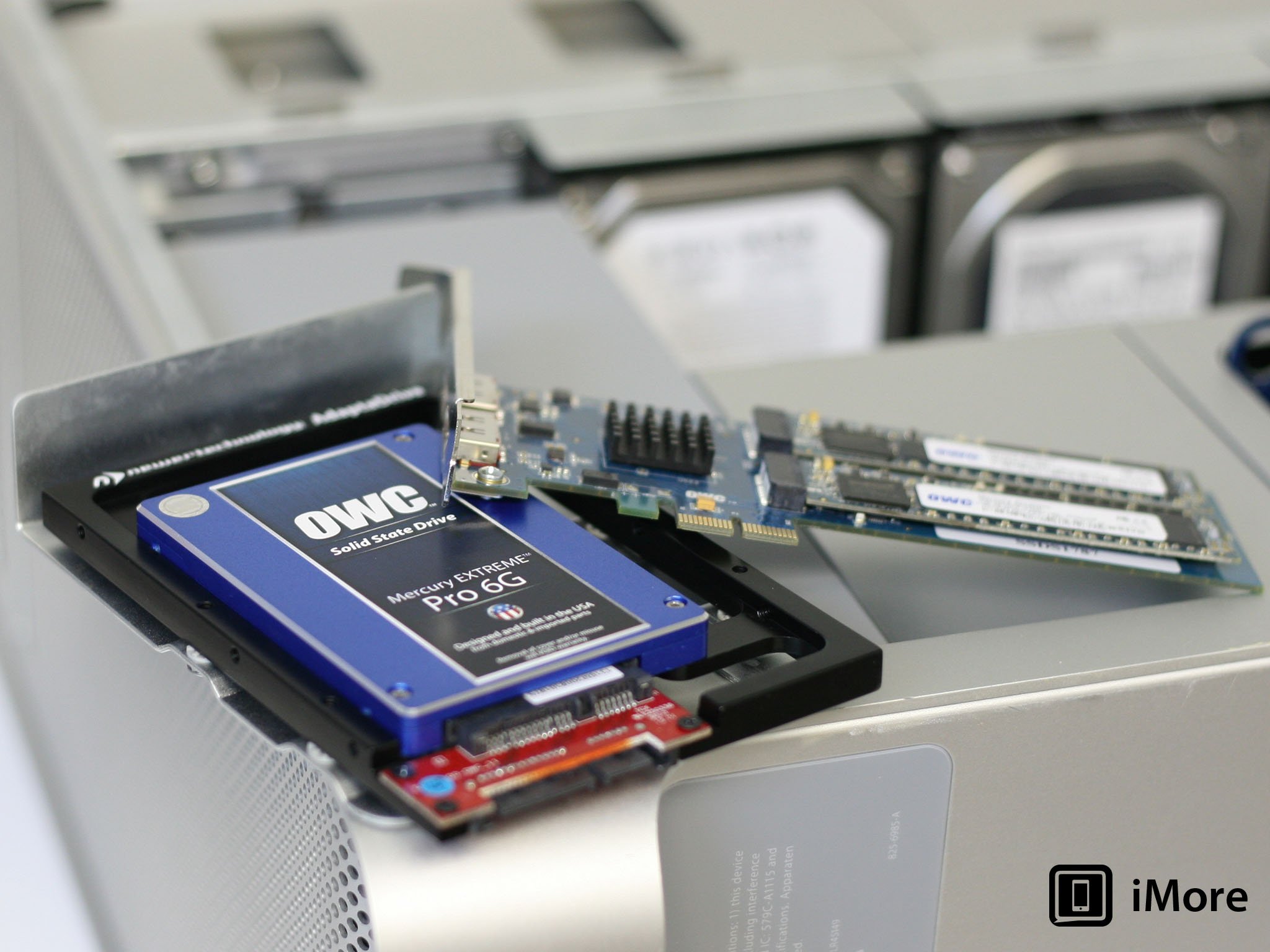

What’s the practical recommendation? If you need more processing power, the new Mac Pro will give it to you. Speed up the hard drive and you’ll help Nehalem shine. Unfortunately not everything you ask of it is already in memory, and that’s where the burden gets pushed down to the hard drive. To fill them with instructions it needs fast access to memory, which it has. It can operate on twice as many threads as Penryn and Conroe and it has much deeper buffers internally. Nehalem is more data hungry than any previous generation Intel microprocessor. Or to answer my loaded question from above: yes, Apple is limiting the performance of its latest Mac Pro by not outfitting it with a high performance SSD. In other words, with a faster IO subsystem the Nehalem Mac Pro is able to outperform its predecessor by a wider margin.

However, swap in Intel’s X25-M and the new Mac Pro is almost 30% faster. With a standard 7200RPM hard drive, the new Nehalem Mac Pro is nearly 24% faster than the original 8-core Mac Pro. I'm simply comparing how long it takes to build the Adium application using Xcode on my old Mac Pro vs the new one using a HDD and then using an Intel X25-M SSD: Xcode Adium Build TestĨ-core Mac Pro 2006/2007 3.0GHz (Clovertown) The table below shows the performance improvement from the old Mac Pro to the new Mac Pro using a HDD and using a SSD. Is Apple doing the new Mac Pro a disservice by not putting a SSD in it as a boot/applications drive? So adding a SSD to an older Mac Pro can breathe new life into it, and in some cases make it faster than a new Mac Pro with a standard hard drive. Now if you combine the new Mac Pro with a SSD, you get an even faster system - it’ll complete the same test in 87 seconds. Simply putting a SSD in the old Mac Pro makes it as fast as the new one with its stock hard drive. Well, when the benchmark isn’t taxing all cores it is bottlenecked by IO it’s accessing the disk. Now let’s look at what happens if we throw an Intel X25-M into the old Mac Pro:Īh ha! Remember that I mentioned the Adium compile test isn’t entirely CPU bound. It’s a 7200RPM 640GB Western Digital Caviar SE16 SATA hard drive. Now both of these machines used the drive that comes with the new Mac Pro. The Nehalem system completed the test in 19% less time than the old 8-core Mac Pro. Despite the significant reduction in clock speed, Hyper Threading gives the new Mac Pro an advantage in build time. The graph below shows you the build time on three systems, the original Mac Pro running at 3.0GHz (in both four and eight core varieties) and the new eight-core Nehalem Mac Pro running at 2.26GHz:

The CPUs don’t stay at 100% for the entire time, but there are periods when they do. This particular test is quite CPU intensive, it will actually tax all 16 threads on a dual-socket Nehalem Mac Pro. I use the latest version of Apple’s Xcode tools to compile the Adium project and I time the build. One of my benchmarks for this review is a test that developers will appreciate. The benefits of using the X25-M in a Mac Pro are just like that of any system: huge. You have to come up with a clever way to mount the drive in the system, but assuming you’re good with metal (or rubber bands) you’ll find a way to get the drive in there. The why doesn’t really matter, because the drive works just fine in any Mac Pro, whether the original one from 2006 or the newest model from 2009. The reasoning isn’t public, but it’s not exactly a technical limitation or performance issue. Now Apple won’t ship a X25-M or any Intel SSD in its systems. You can read about the history behind SSDs in my Mac Pro here, but eventually I ended up with an Intel X25-M in the system. That’s when I turned to an SSD to solve my problems.
#INSTALL SSD IN MAC PRO 5.1 PC#
Applications didn’t launch quite as snappily, not to mention how painful it was to launch anything immediately upon reaching the desktop.Īdmittedly my Mac Pro lasted longer before I started to feel that it was slow than any PC I’d used up to that point, but it eventually got to where I was frustrated. For the most part the machine remained nice and snappy, but over time it lost that fresh-out-of-the-box feeling. My Mac Pro started with 2GB, then 4GB then 8GB. Because of this I always outfitted my Macs with as much memory as possible. I could leave most applications active and I was rarely bogged down by the inexplainable disk crunching that I got in Windows.
#INSTALL SSD IN MAC PRO 5.1 WINDOWS#
One thing I always appreciated about OS X was that it seemed to keep things in memory in a more intelligent way than Windows ever did. I’ll give you my history with the Mac Pro before diving into some of the details on what a fast SSD will do for one of these systems. I hate to sound like a broken record but I can’t stress the upside to having a SSD in any machine, especially the Mac Pro. The Alternative: SSD in an Older Mac Pro?


 0 kommentar(er)
0 kommentar(er)
